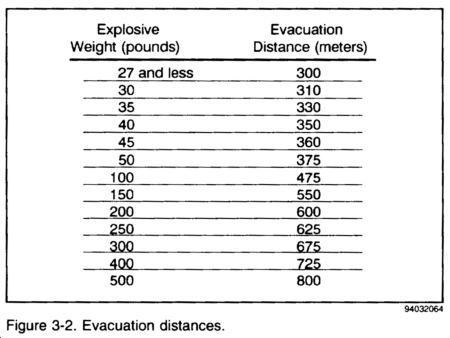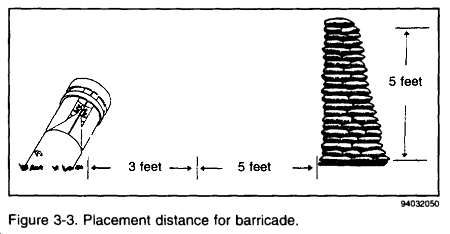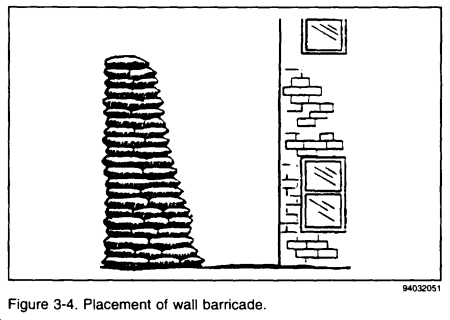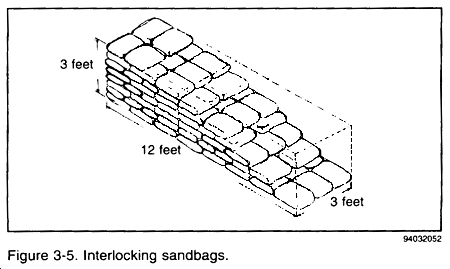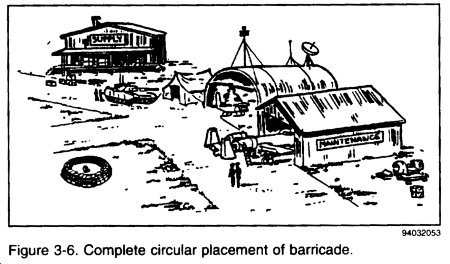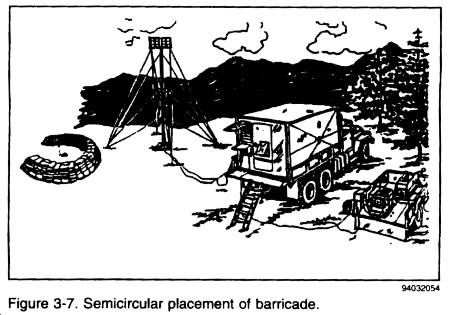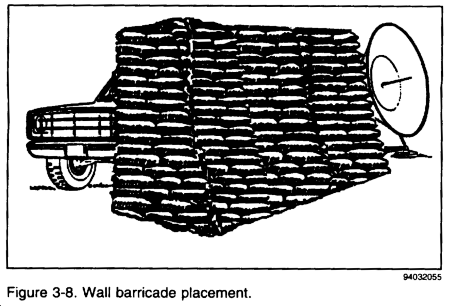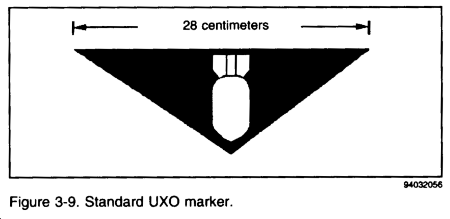Unexploded Ordinance (UXO)
"Don't pick up anything that you did not drop."
Some of this ordnance is visually obvious and easily recognized.
In either case, it is important to be able to recognize UXO, and know how to deal with it safely.
Recognition of Unexploded Ordnance: Atlas of Unexploded Ordinanace Once a UXO is identified:
Evacuate all non-essential personnel far enough away from the UXO to reasonably protect them. This chart gives some guidance in determining safe evacuation distances. If a protective barrier is erected, shorter distances can be used. Sometimes, for mission-related, operational, or other reasons, you cannot evacuate personnel and/or equipment or you cannot leave a particular area. When this happens, you must isolate either your assets (personnel, equipment, and operations) from the UXO or isolate the UXO from your assets.
A barricade is an artificial barrier that provides limited protection by channeling the blast and fragmentation from the threatened area. Barricades may also be used to lessen the effect of the blast and to reduce the size of the evacuation area. Building artificial barricades is very time consuming and requires a large number of sandbags. Depending on the size of the UXO, barricades can be built around the UXO to protect the entire area, or they can be built next to the equipment or areas that cannot be evacuated. The barricade should be built no closer to the UXO than the height for the barricade plus 3 feet. For example, the barricade shown in this drawing is 5 feet tall. By adding an additional 3 feet, the barricade is built no closer than 8 feet to the UXO. When possible, build the barricade between the building and/or the equipment to be protected and the UXO. By positioning the barricade in this location, personnel who are in or around the building or who are using the equipment will be afforded the greatest protection from the blast and flying fragments. When building a barricade, the sandbags must be interlocked for stability. Sandbags that are not interlocked will reduce protection and make the barricade unstable. For small UXOs such as missiles and rockets less than 70 millimeters in diameter, for projectiles less than 75 millimeters in diameter, and for submunitions and grenades, a doublewall thickness of sandbags should surround the area of the UXO. The sandbags must be stacked to a height of at least 3 feet and should be thick enough to protect personnel and equipment from the blast and fragmentation. A circular barricade is the best choice for small UXO hazards, because it provides complete protection for personnel and equipment. A circular barricade that is 8 feet in diameter, 3 feet tall, and 3 sandbags thick would require approximately 400 sandbags. The circular barricade shown above will force the blast and fragmentation upward. For medium-sized UXOs such as missiles, rockets, and projectiles up to 200 millimeters in diameter, and for large-sized placed munitions on the surface, a four-or five-wall thickness of sandbags should surround the area. The sandbags must be stacked to a height of at least 5 feet in order to protect assets. This type of barricade is usually semicircular. It will channel the blast and fragmentation through the open side and away from the protected area. Large UXOs such as projectiles, missiles, and general-purpose bombs are too large for effective barricades to be built around them. In these cases, equipment and personnel activity areas would need to be barricaded. A wall barricade between the affected area and the UXO hazard provides the best and easiest protection. The number of wall barricades you need will depend on how much equipment or how many personnel you must protect. A wall barricade that is 12 feet long, 6 feet high, and 3 sandbags thick would require 700 sandbags. The barricade should extend beyond and be at least as tall as the equipment or personnel areas to be protected. Equipment that is barricaded must still be usable. For example, the radar shown here must be left exposed in order to function. UXO hazards are marked using triangular signs, if available, that by their background color indicate the danger involved. The standard UXO marker is shown here. The background is red with a white bomb inset. It has the same dimensions as the other markers. The UXO marker is placed above ground at waist level (about 3 feet) with the bomb pointing down. The marker should be placed no closer to the hazard than the point where you first recognized the UXO hazard. The marker should be attached to a stake, a tree, or other suitable holder. Just be sure that the marker is clearly visible. Mark all logical approach routes to the area. For example, if the hazard is near a road, as a minimum, put a marker on each side of the road approaching the UXO. If there is a large concentration of UXO hazards such as submunitions, mark the area as you would a scatterable minefield, with markers placed about every 15 meters around the area. As a general rule, the UXO hazard itself must be easily seen from any of the markers. This helps to keep others away from the hazard. It also helps the EOD team to find the hazard. If standard UXO markers are not available, you may use other suitable materials (such as engineer tape or colored ribbons). Ensure that the same color is used to avoid confusion. When using other materials, the same principles used for the standard markers apply for placement of the makeshift markers. That is, they should be placed about 3 feet off the ground and easily seen from all approach routes. The UXO spot report is a detailed, swift, two-way reporting system that makes clear where the UXO hazard areas are, what their priorities are, and which units are affected by them. The report is used to request help in handling a UXO hazard that is beyond a unitís ability to handle and that affects the unitís mission. This report helps the commander set priorities based on the battlefield situation. The UXO spot report is the first-echelon report that is sent when a UXO is encountered. The report consists of nine lines. The information must be sent by the fastest means available and the required information provided in the following order:
A priority of "Minor" or "No Threat" does not mean that the UXO is not dangerous. *Much of the material for this chapter was taken from FM 21-16 (FMFM 13-8-1, "Unexploded Ordnance (UXO) Procedures") |
From Operational Medicine 2001: Health Care in Military Settings
CAPT Michael John Hughey, MC, USNR
NAVMED P-5139
January 1, 2001
Bureau of Medicine and
Surgery,
Department of the Navy,
2300 E Street NW,
Washington, D.C,
20372-5300
United States Special Operations Command,
7701 Tampa Point Blvd.,
MacDill AFB, Florida,
33621-5323
Home ∑ Textbooks and Manuals ∑ Videos ∑ Lectures ∑ Distance Learning ∑ Training ∑ Operational Safety ∑ Search
|
|
|
© 2006 Medical Education Division, Brookside Associates, Ltd. All rights reserved
 Those working in a military environments will
occasionally encounter unexploded ordnance.
Those working in a military environments will
occasionally encounter unexploded ordnance. 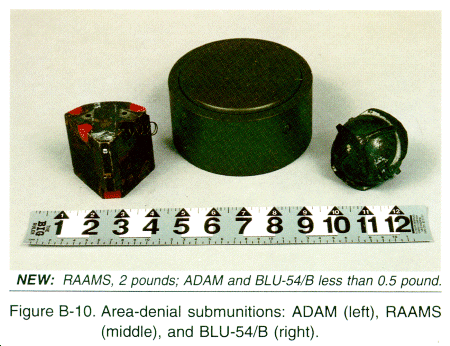 Some is not so obvious and may appear harmless.
Some is not so obvious and may appear harmless. 